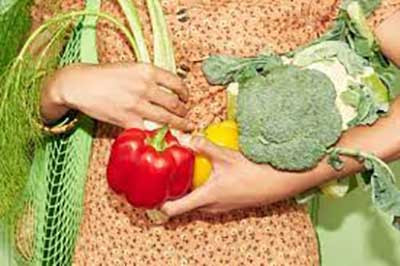Date: 20/10/2022
Relevance: GS-2: Issues relating to Poverty and Hunger.
Relevance: GS-3: Inclusive Growth, Issues of Buffer Stocks and Food Security, Climate Change.
Key Phrases: Sustainable Food Value Chain, Circular Economy, Family Farming, FAO, Industry 4.0 Technology, Sustainable Development Goals, State of Food Security and Nutrition in World 2022, Joint Child Malnutrition Estimates 2021, Climate Change, Gender Balance Promotion.
Context:
- Recently released, “The State of Food Security and Nutrition in the World, 2022” report indicates that the world is moving in the wrong direction on the Sustainable Development Goals (SDGs) targets to end hunger, food insecurity, and all forms of malnutrition.
Key Highlights:
- According to the Joint Child Malnutrition estimate 2021, 149 million children under five are stunted, 45 million are wasted, and 39 million are overweight.
- By 2050, the world population is estimated to grow to 9.7 billion, so food security and sustainability are imperative to overcome hunger and reduce the impact of climate change.
Do you know?
- The food industry employs 1.1 billion people worldwide, accounting for 31 percent of global employment.
Why is a Sustainable Food Value Chain necessary?
- To fulfill the nutritional demands of the world’s population and ensure food security by 2050, food output will have to increase by 70 percent.
- Food systems are failing to meet the complex global environmental, social, and economic challenges of the 21st century.
- Goal 2(to end hunger, achieve food security and improve nutrition and promote sustainable agriculture) and Goal 12 of SDGs (ensure sustainable consumption and production pattern) emphasize the necessity of a sustainable food chain system.
Sustainable Food Value Chain System
- About
- FAO defines, Sustainable food value chain as “The full range of farms and firms and their successive coordinated value-adding activities that produce particular raw agricultural materials and transform them into particular food products that are sold to final consumers and disposed of after use, in a manner that is profitable throughout, has broad-based benefits for society and does not permanently deplete natural resources”.
- Characteristics
- It is profitable throughout all of its stages (economic sustainability).
- It has broad-based benefits for society (social sustainability).
- It has a positive or neutral impact on the natural environment (environmental sustainability).
- The Concept of Sustainability
- In SFVC development, a holistic triple bottom line approach
is followed, in which there are three main dimensions to
sustainability: economic, social, and environmental.
- Economic Dimension:
- In the economic dimension, a value chain is considered sustainable if the activities carried out by each stakeholder are commercially viable, or fiscally viable for public services.
- Social Dimension:
- Here, sustainability refers to socially and culturally acceptable outcomes in terms of the distribution of benefits and costs associated with the increased value creation
- Environmental Dimension:
- In the environmental dimension, sustainability is determined by the ability of value chain actors to generate positive or neutral impacts on the natural environment from their activities.
- Economic Dimension:
- In SFVC development, a holistic triple bottom line approach
is followed, in which there are three main dimensions to
sustainability: economic, social, and environmental.

Challenges in Traditional Food Value Chain System:
- Wastage in Food Supply Chain:
- About one-third of all food produced for people is lost or wasted annually.
- During production, losses can be incurred due to damage through things like poor handling, use of machinery, and incorrect storage conditions.
- Food can also be lost at the processing stage through contamination, inefficiencies, and improper packaging.
- Unsustainable Practices:
- The use of fertilizers, manure, and N-fixing legumes has disrupted global N and P cycles, with negative impacts on water quality, aquatic ecosystems, and marine fisheries.
- Global estimates suggest that livestock production accounts for about 12–18 % of global GHG emissions.
- The current food system is responsible for about one-third of global greenhouse gas emissions.
Practices for Sustainable Food Value Chain System:
- There are some best practices that have the potential to overcome the
challenges faced by traditional food chain value systems as follows:
- Family Farming:
- Family farmers have the potential to promote social equity and community well-being by creating higher levels of social engagement while avoiding static gender roles.
- Family farms and smallholders also generate employment and income growth, especially in rural areas, which leads to poverty reduction, and improvement in dietary diversity and sustainable use of resources.
- Short food supply networks:
- These are more sustainable and socially feasible for small- and medium-scale producers who have difficulty accessing long, conventional food chains.
- Gender balance promotion is also seen as a result of increasing women's employment in logistical operations as opposed to long chains, where women’s participation in distribution is quite restricted.
- Family Farming:
Way Forward:
- There is a need for better resource management for the food supply chains.
- Sustainable processing phase and improved food delivery methods should be promoted using new advanced technologies of Industry 4.0 such as AI, RFID, Cloud computing, Machine learning, and Blockchain technology , etc.
- These can be advantageous in providing better information exchange to decrease food loss and waste in the processing phases of food supply chains.
- Influencing behavior and developing consumer trust should be prioritized.
- Incorporating sustainable practices into food preparation and processing.
- Governments could do more to reduce trade barriers for nutritious foods, such as fruits, vegetables and pulses.
Conclusion:
- A more productive, inclusive, and environmentally sustainable food system is the need of the hour to end hunger, reach food security, and achieve the SDGs.
Source: ORF-Online
Mains Question:
Q. What do you understand by sustainable food value chains? How are sustainable food value chains critical for global food security and circular economy? How could the circular economy contribute to tackling the climate crisis and achieving the SDGs? (250 Words).






















